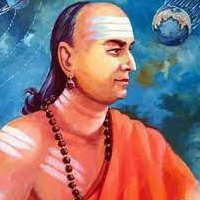Varahamihira
Varahamihira, Indian sage who predicted water discovery on Mars 1500 years ago. Indian astronomer, mathematician and astrologer from Ujjain, Varahamihira in his book , written 1500 years ago had mentioned so many insights about space and universe that has shocked the scientists of today.
One treatise which Varahamihira summarises was the Romaka-Siddhanta which itself was based on the epicycle theory of the motions of the Sun and the Moon given by the Greeks in the 1st century AD. The Romaka-Siddhanta was based on the tropical year of Hipparchus and on the Metonic cycle of 19 years. Other works which Varahamihira summarises are also based on the Greek epicycle theory of the motions of the heavenly bodies. He revised the calendar by updating these earlier works to take into account precession since they were written. The Pancasiddhantika also contains many examples of the use of a place-value number system.
There is, however, quite a debate about interpreting data from Varahamihira’s astronomical texts and from other similar works. Some believe that the astronomical theories are Babylonian in origin, while others argue that the Indians refined the Babylonian models by making observations of their own. Much needs to be done in this area to clarify some of these interesting theories.
Varāhamihira’s most notable works were the Brihat Samhita, an encyclopedic[ work on architecture, temples, planetary motions, eclipses, timekeeping, astrology, seasons, cloud formation, rainfall, agriculture, mathematics, gemology, perfumes and many other topics. According to Varahamihira, in some verses he was merely summarizing earlier existing literature on astronomy, Shilpa Sastra and temple architecture, yet his presentation of different theories and models of design are among the earliest texts that have survived. The chapters of the Brihat Samhita and verses of Varahamihira were quoted by the Persian traveler and scholar Al Biruni.
Varāhamihira is also credited with writing several authoritative texts on astronomy and astrology. He learned the Greek language, and praised the Greeks (Yavanas) in his text for being “well trained in the sciences”, though impure in ritual order. Some scholars consider him to be the strong candidate as the one who understood and introduced the zodiac signs, predictive calculations for auspicious ceremonies and astrological computations.
Varahamihira made some important mathematical discoveries. Among these are certain trigonometric formulae which translated into our present day notation correspond to
Another important contribution to trigonometry was his sine tables where he improved those of Aryabhata I giving more accurate values. It should be emphasised that accuracy was very important for these Indian mathematicians since they were computing sine tables for applications to astronomy and astrology. This motivated much of the improved accuracy they achieved by developing new interpolation methods.

Varahamihira
Date of Birth: 13 Nov 2025
Birth Place: 505 AD, Kapitha, near Ujjain
Proffession: astronomer, mathematician and astrologer
Nationality: Indian
Death: 587 AD


